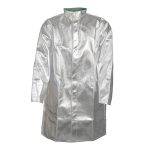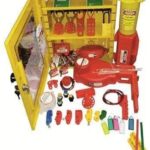Your list is empty, add products to the list to send a request
The Impact of Climate Change on Fire Safety and Prevention

26
May
Climate change is a worldwide phenomenon that has broad implications for different parts of our lives. One region where its impact is progressively evident is fire safety and prevention.
The changing climate examples and rising temperatures present critical difficulties for fire safety professionals, including fire-fighting engineers, and require the adaptation of fire-fighting solutions.
In this article, we will explore the impact of climate change on fire safety and the job of Clean Agent Fire Extinguishers in relieving these risks.
1. Expanded Frequency and Power of Wildfires:
Climate change has prompted an expansion in the recurrence and power of wildfires around the world. Rising temperatures, prolonged dry spells, and adjusted precipitation designs make ideal conditions for the fast spread of wildfires. These horrendous events pose critical risks to living souls, property, and the environment.
2. Changes in Building Plan and Construction:
As climate change impacts fire risks, there is a need to adjust building plans and construction rehearses in like manner. Higher temperatures, for instance, may require the utilization of additional fire-safe materials in construction. Fire-fighting engineers play an imperative part in evaluating these dangers and guaranteeing that structures are planned and constructed to withstand fire occurrences.
3. Changed Fire Conduct and Firefighting Strategies:
Climate change can likewise modify fire conduct, making it more testing to foresee and control fires. The changing climate can prompt stronger breezes, sporadic fire spread, and expanded firepower.
These variables impact firefighting methods, requiring firefighting engineers to adjust their procedures. New firefighting innovations and gear might be important to battle these changing fire elements really.
4. Significance of Clean Agent Fire Extinguishers:
Clean Agent Fire Extinguishers are an essential tool in fire safety and prevention, particularly in the context of climate change. These extinguishers use non-poisonous gases or compound specialists that quickly stifle fires without passing on residue or actually harming individuals or the environment.
Clean Agent Fire Extinguishers can be utilized in different settings, including server rooms, electrical gear regions, and touchy environments where water harm is a concern.
5. Accentuating Fire Safety Education and Readiness:
Even with climate change and its impact on fire safety, education, and readiness play a basic part. It is fundamental to teach people and networks about fire prevention measures, evacuation systems, and the appropriate utilization of fire safety gear.
Fire-fighting engineers can contribute by conducting instructional meetings, bringing issues to light about fire risks related to climate change, and advancing fire safety practices.
Conclusion
Climate change presents critical difficulties for fire safety and prevention. Don’t hang tight for the impact of climate change to endanger your fire safety. Make a move today by visiting firesupplies.in to guarantee you have the fundamental tools to protect yourself, your property, and your friends and family. Allow us to be your believed accomplice in exploring the changing landscape of fire safety.



































